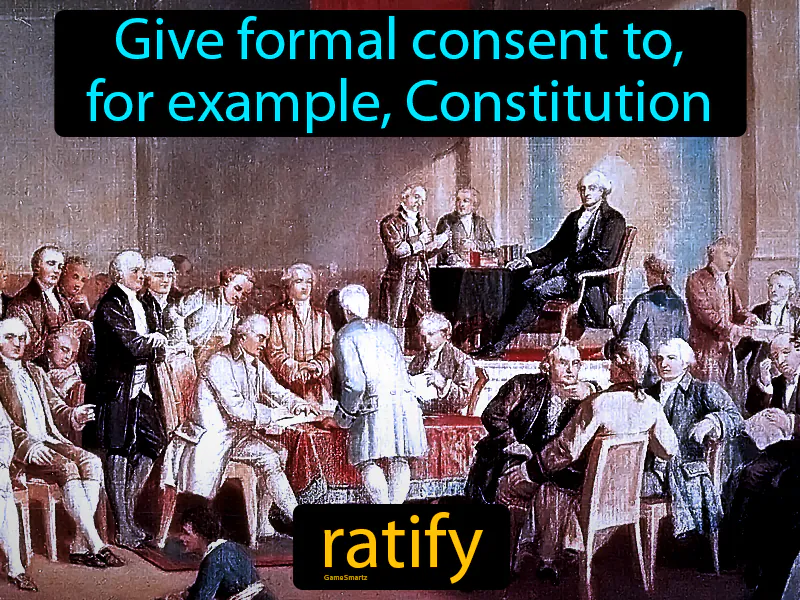Ratify
Ratify: Easy to understand
In history, ratifying the U.S. Constitution meant that the states formally agreed to adopt the new set of rules and principles that would govern the country. This was important because it replaced the weaker Articles of Confederation and created a stronger federal government to unite the states. The ratification process responded to the need for a stable, effective government that could handle issues like trade, defense, and taxation. Today, ratification still matters because it is how we approve important agreements, like treaties, ensuring they reflect the people's interests. For example, when a new treaty is ratified by the U.S. Senate, it can impact trade policies, which might affect local businesses and job opportunities in your community.

Practice Version

Ratify: Give formal consent to, for example, Constitution. ratify. In history, to ratify means to officially approve a document or agreement, often making it legally valid, like when the Constitution was accepted by the states.